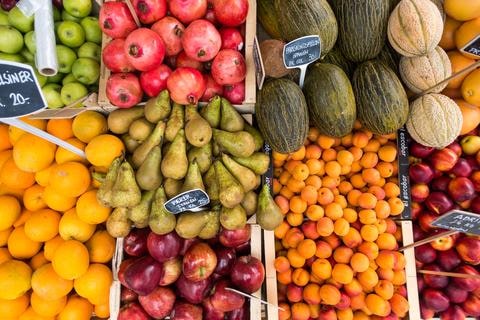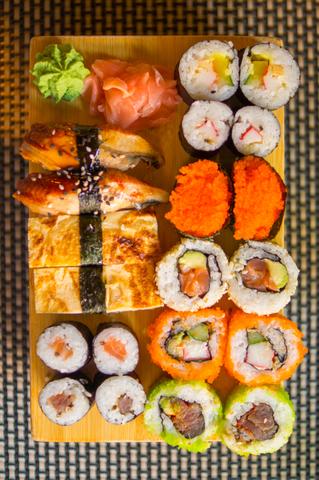Food Industry in Japan

Japan has emerged as a global leader for the use of ozone in the food industry. A 2006 study by Shigezo Naito and Hirofumi Takahara attributes this success to modern ozone generators. These ozone generators still remain energy efficient. They are also capable of producing high amounts of ozone.

Powerful Sanitizer
According to the study, ozone is one of the best sanitizers available on the market today. Ozone is a powerful oxidizing agent, rivaled only by fluorine.What Ozone Does to Bacteria
The researchers attribute this potency to the unique properties of ozone. Ozone rips open the cell wall of bacteria from the outside, causing the cell contents to fall apart. Once inside the cell, ozone destroys the DNA of the organism. This process results in oxidization. Bacteria cannot develop a resistance to ozone under these circumstances. The oxidation leaves nothing behind.Ozone in the Japanese Food Industry
Ozone is best utilized in the Japanese food industry in two ways. Treatment plants have the option of using ozone gas and ozonated water. The study argues ozonated water is more efficient because it is easier to contain. Ozone gas has a short half-life of around 30 minutes, making it impossible to store.
Fruits & Vegetables
The researchers tested ozonated water on a plethora of fruits and vegetables. These vegetables included carrots, cabbage, lettuce, apples, oranges, grapes, Chinese gooseberries, Japanese persimmons, Japanese radishes, cucumbers, spinach, bean sprouts, parsley, melons, burdocks, and potatoes. They used 0.5 to 5.0mg/L of ozonated water on the produce for an extended period. The study found the water treatment extended the shelf-life of all produce tested.
Microorganisms Discovered on Fruits and Vegetables
“The influence of ozone modified atmosphere packaging, storage temperature, and time on survival ratio and growth of microorganisms were determined for shredded lettuce, grape, strawberry, sliced cucumber, shredded Japanese radish, and shredded carrot," the research paper says.Reduction of E. coli and Corynebacterium
The study finds that ozone gas reduced E. coli and Corynebacterium. Store these fruits and vegetables in a mild 41˚ F (5˚ C). The study suggests your fruits and vegetables will last longer.Ozone and the modified-atmosphere Packaging
Around the world, the food industry uses modified atmosphere packaging mentioned above. This helps to maintain freshness in produce by preventing ripening. Ozone increases the effectiveness of the modified atmosphere packaging. The study used ozone in controlled environments.Fish
Ozone increases the shelf-life of fish. It is no secret that fish farming can be toxic. In the United States, fish farms often use ozone. We know because some of them are our customers. Aboard the fishing boats in Japan, they use ozone to reduce the slimy quality. I know that was a pleasant statement. But, please hear me out. In the study, the researchers used ozonated water to improve the sensory qualities for fish. This means it will taste, smell, and look better to the consumer.
Cereals & Cereal Products
Believe it or not, cereal products contain contaminants like Bacillus, Coliform bacteria, Micrococcus, Flavobacterium, Alcaligenes, and Serratia. Mold grows on these food products, according to the study. Keeping cereal products free of contaminants is key. Bacteria in bread occurs while cooling and/or while wrapping the item.“The surface of a freshly baked loaf of bread is practically free of viable microorganisms but is subject to contamination by mold spores from the air during cooling and before wrapping. During slicing, contamination may take place from microorganisms in the air, on the knives, or on the wrapper,” the study said.

"The survival ratio of M. suaverolens was found to decrease with increasing dissolved ozone concentration ranging from 1 to 15mg/l and all mold cells were completely killed with ozonated water containing 15mg/L dissolved ozone at 25C for 5 minutes."
Confectionery Products
The researchers examined ozone treatment on sugar confectionery products, including chocolate confectionery products. Mold is the most common problem for both categories of confectionery products.Bacteria impact confectionery products because they contain different ingredients. Roping, which is a germ disease, can impact cake. "The spores of these species can withstand the temperature of cake during baking, which does not exceed 100˚ C or contaminated during cooling and can germinate and grow in the loaf if conditions are favorable." Bakers, let that sink in.

Meat
Autolysis is where the meat uses its own enzymes to digest cells that cause problems. It kills yeast. Excessive autolysis can impact the quality of the meat product by giving it a souring taste."It has been pointed out that during slaughter, dressing, and cutting, microorganisms come chiefly from the exterior of the animal and its intestinal tract but more are added from knives, cloths, air, workers, carts, boxes, and equipment in general," the study said.
Air Ozone Generators
We heard the same thing about cereals. We can see a trend in food processing plants. The study says that air disinfection is also important in these plants. Guess what? Many of you already know that ozone can treat the air as well. The researchers in another study reduced contaminants in the air."The interior environment in a factory that manufactures Japanese Row noodles was exposed to 0.05–0.18 ppm ozone for 5–6 h per day and 1 year. Aerial contaminants such as Lactobacillus fructivorans, which cause swelling phenomenon of product, Japanese Row Noodle processes were reduced." (Naitoh, 1997a).

Chicken
Your mother may have warned you not to buy swollen packs of chicken at the grocery store. The main reason is bacteria contaminants produce gas."It it can be assumed that under ordinary conditions most kinds of potential spoilage organisms are present and will be able to grow if favorable conditions present themselves," the study said.
The researchers examined the bacteria levels on smoked chicken. "Ozone also can be applied for preventing secondary contamination during smoked chicken roll manufacturing." Adding ozonated water to the manufacturing process had a positive impact. "The microorganisms isolated from spoiled smoked chicken roll were exposed to 0.3–0.8 ppm ozone for 1–4 h. These bacteria were reduced."

Soy
Natto, a traditional Japanese soy product food item, was ozone-treated as well. To create fermentation, they use a certain amount of bacteria that is crucial to ripening. Pollution by bacteriophages are in some natto products. "the status of natto plant pollution by bacteriophages, which cause mucilage formation of natto throughout Japan, is one of the most crucial topics today," the study said.The researchers found a useful way to use ozone in the natto plants to prevent contamination. They sprayed an interior floor in a natto factory with 0.5 to 1.0 mg/L ozonated water for 30 minutes per day for 3 months. Researchers discovered that “Floor contamination such as natto bacteriophage in the natto processes was eliminated."
Conclusions
The study concluded, “Ozone is effective as a potent sanitizer in the food industry for vegetables, fruits, fish and processing marine products, cereal and cereal products, confectionery products, meat and meat products, processing plants.”The degree of success for each product type varied. The ozonated water concentration and exposure mattered. One thing is for certain. Ozone is effective in the food industry.
A2Z Ozone creates ozone generators scaled with large industries in mind. A2Z Ozone produces long-term industrial-strength ozone generators. These can have high-capacity ozone concentration outputs. For more information about industrial ozone generators, please contact us at +1(502)499-4977 or email us at info@a2zozone.com
Reference
Ozone Contribution in Food Industry in Japan: http://www.tandfonline.com/doi/pdf/10.1080/01919510600987347
Modified Atmosphere Packaging of Fruits and Vegetables. 1989. A.A. Kader, D. Zagory, E.L. Kerbel. https://pubmed.ncbi.nlm.nih.gov/2647417/
Our ozone generators are designed and distributed by A2Z Ozone, Inc. in Louisville, Kentucky USA. EPA Est.: 95432-KY-1. Produced and made in China.

